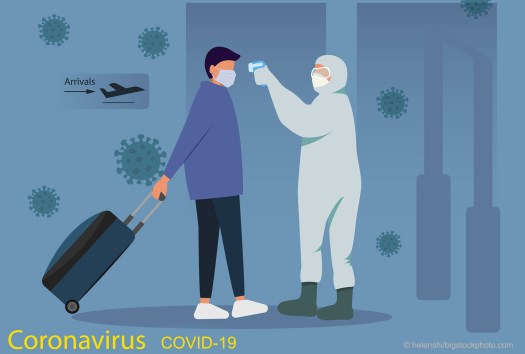
It is self-evident that we are all impacted by something called a “virus.” What are viruses, and what is their purpose?
The first clue about viruses was in 1898 when scientists discovered that the cause of foot and mouth disease in livestock was something smaller than any bacteria. Because viruses are about 100 times smaller than bacteria, they could not be detected until electron microscopes were developed in 1931. Since viruses were too small to be filtered out, scientists initially thought they were liquids. They were given the name “virus” which comes from the Latin word for poison.
Later, scientists discovered that a virus is a protein (DNA or RNA) molecule enclosed in a capsid covered by a protective layer of fat, or lipids. The virus in and of itself is inert and unable to reproduce. So what is their purpose? When they come in contact with living cells, they insert their genetic material into the host, so the cell now produces viral protein. This may produce harmful and life-threatening results. Among the illnesses generated by viruses are the common cold, influenza, smallpox, chickenpox, herpes, shingles, AIDS, polio, rabies, Ebola, and others.
If the protein is beneficial, the virus can produce a useful evolutionary change. In that way, viruses are tools to create new genetic products. In today’s world of genetic engineering, the process is called transduction. We have pointed out before that many times good things come from evolutionary change. God designed living things with the ability to change and adapt. Scientists use viruses as tools to affect desired genetic changes in agricultural products to produce high protein corn, for example. Some viruses attack bacteria, and they are called bacteriophages. As bacteria have developed resistance to antibiotics, scientists are interested in using bacteriophages as a defense against harmful bacteria.
If they are not living things, then what are viruses? They are sometimes called “organisms on the edge of life.” They are not fully living on their own, but they possess some characteristics of living things. Viruses are very fragile because the only thing protecting them is a thin layer of fat, known as lipids. If the fat is dissolved, the protein molecule disperses and breaks down on its own. That is why any soap or detergent will destroy a virus, and why washing your hands with soap and warm water is essential. Heat melts fat, so water above 25 degrees Celsius (77 degrees F) for washing clothes, dishes, or hands will destroy viruses. Any solution which is more than 60% alcohol will dissolve fat and destroy the virus, as will bleach in a 1 to 5 ratio to water. Antibiotics or bactericides do not affect a virus because they only work on living tissue. Antibiotics cannot kill what is not alive.
The problem with viruses is that when they are transferred from animals into humans, or even different animals, they can be destructive. Scientists believe that the current coronavirus (SARS-CoV-2) is active in bats where it causes no problems. When the virus jumped into humans, the result was destructive.
Then, what is their purpose? Viruses can be useful tools in their proper place. They are part of the way life continues to exist on a changing Earth. Mismanagement of animals and food can cause a virus to become an enemy of humans. We have a repeat of the Frankenstein phenomenon when a potentially useful concept turns into a monster because of misuse.
— John N. Clayton © 2020
Data from: Berkeley.edu and wikipedia.org




